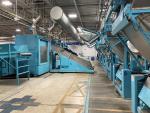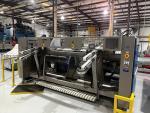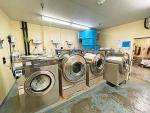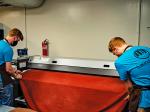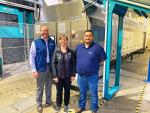CHICAGO — Over the past few years, laundry and linen services have been in survival mode.
The pandemic, lockdowns, supply-chain and labor issues, economic challenges—many operations have been doing all they can to simply process goods.
And customers were delighted to have clean linens.
That’s changing.
The further the world gets from the pandemic and challenges are gradually overcome, laundry and linen services must refocus on quality to satisfy customers even as operations are still working to recover.
OPTIMIZING PERSONNEL, EQUIPMENT, QUALITY CONTROL
In the hospitality market, Tammie L. Hood, vice president/general manager of United Hospitality Services (UHS) in Austell, Georgia, says that hotels are now more experience-based, so the company strives to maintain or exceed the customer experience that is demanded by the guest, and that sometimes makes it challenging in mass production.
“The guest categories over the years have shifted from more business to more leisure,” she points out. “That itself requires more attention to detail on our end to make sure linen is cleaner and free of stains as pertaining to new guest categories.
“We have to constantly continue to evolve in the market space with adding new formulas and chemistry to make sure guest experience is at peak levels. But we love to take the challenge of providing what our customers expect and demand of us, that’s what makes us the best.”
Hood says that the company’s biggest quality challenge after the pandemic has been hotels maintaining par levels.
“The supply chain is still recovering, and due to this shortage of linen product, many hotels do not have the proper par levels,” says. “This increases wash and process which wears the linen much quicker and due to the shortage, they are not able to replace linen as needed.”
The demand for quality has increased as the pandemic gets farther away in the rearview mirror, and Hood says UHS has been able to keep up with the demand by investing in state-of-the-art equipment and understanding the hotel clientele shift coupled with market shifts on products that stain the linen more and how to use better wash formulas to keep the linen fresh and its hotels ready to provide its clients the experience they expect.
Hood’s formula for analyzing laundry processing quality is simple.
“Staff training, quality control measures and to communicate to the customers the health of their linen and deterioration a over period of time for proper par installations,” she shares.
Her advice for operations to refocus on quality and raise their quality levels follows the same simple, but effective, lines.
“Staff training, quality control measures, optimizing detergent/water and energy usage, maintenance and upkeep of equipment, streamlining processes, employee engagement, customer feedback, and focus on stain removal and educating customers,” she says.
What investments does Hood think an operation should be making to increase processing quality?
She shares, “Modern equipment, automation and technology, quality control systems, water recycling systems, environmentally friendly detergents and chemicals, training/skill development, inventory management systems, data analytics, and customized solutions.”
THE HUMAN FACTOR
Angie Ringling, owner and president of Spin Linen, an independently owned linen rental company in Omaha, Nebraska, points to one key issue in the quality drop laundry operations experienced over the past few years.
“Staff was just not engaged in owning the quality piece,” she says. “There just was a real drop in caring after COVID.”
At Spin Linen, Ringling says goods going through a bagger was probably the worst drop in quality the company experienced.
“Operators would walk away from the workstations because the machine would operate itself,” she shares. “They weren’t paying close attention to quality.”
Ringling says that customers have been frustrated by the drop in quality.
She says, “Some customers have accepted the new norm that the pre-COVID expectations just have not been able to come back.”
When it comes to a laundry analyzing the quality of its processing, Ringling says it has to be done at the operator level.
“You have to have operators who will take the time to monitor,” she points out. “It’s hard given the amount of productivity they are trying to achieve.
“Training, training and more training of staff is key. You have to always have quality top of mind and top of priority with leads and management watching for it.”
Ringling adds, “A really good chemical partner is also key to keeping the rejects down.”
She concludes, “A lot of quality measures still come at the human capital level. There are some equipment options that can help locate deficiencies. However, nothing I’ve seen can detect better than a human still.”
FUTURE QUALITY
When asked how laundries can help ensure quality levels during future challenges, Harry Kertenian, COO-CFO of Magic Laundry Services headquartered in Montebello, California, responds, “With improved technology, training, customer service, and dedicated employees, quality can always be achieved and maintained.”
Hood says, “Enhanced cleaning and sanitization protocols, staff training on health and safety, flexibility in operations, contactless services, inventory management and supply-chain resilience, communication with customers, customer feedback and adaptation, and an emergency response plan.”
Ringling concludes, “You have to stay vigilant on rewash policies, have a good chemical vendor, and management attention to and reinforcement of quality measures that are incorporated into daily routines.”
Miss Part 1 about overcoming supply-chain and labor issues over the past few years? Click HERE now to read it!
Have a question or comment? E-mail our editor Matt Poe at [email protected].



